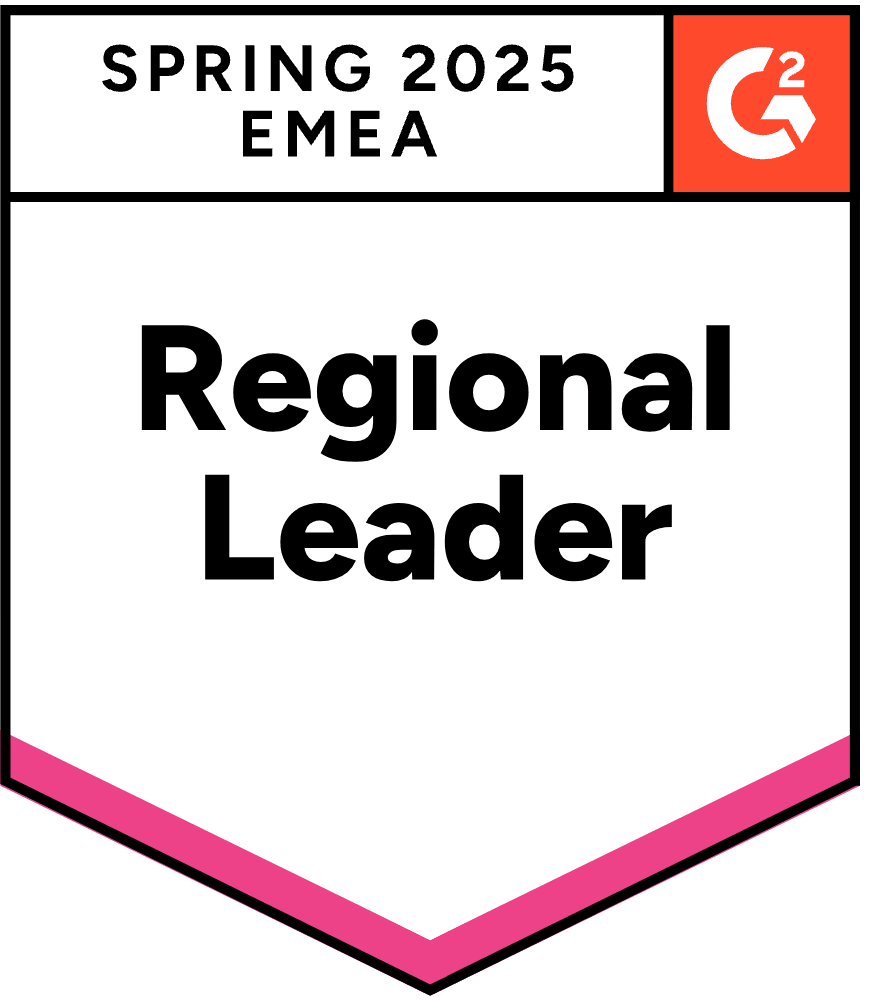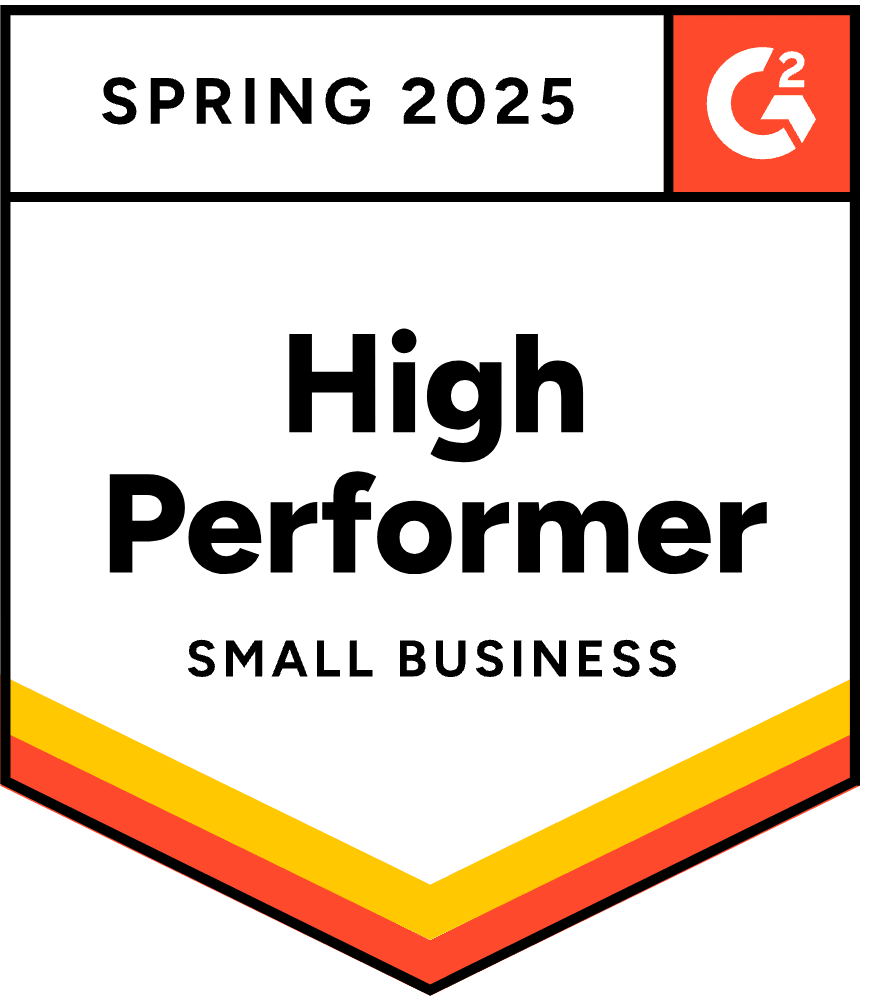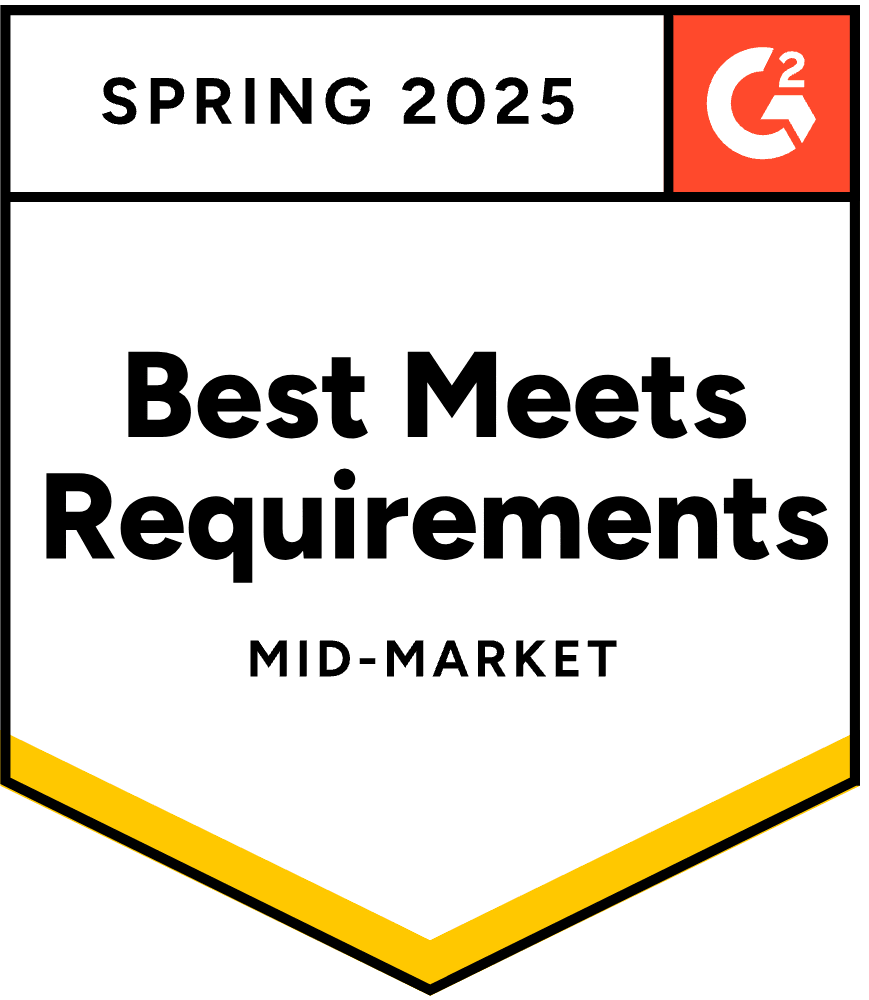- Blog
- Understanding the 5 Stages of Customer Awareness to Increase Your Conversions
Understanding the 5 Stages of Customer Awareness to Increase Your Conversions
-
Csaba Zajdo
- Conversion
- 6 min read
Table of Contents
Most online stores struggle to convert their website visitors into customers. If you’re riding the struggle bus—we’ve got your back!
We know you’ve researched your product lines, your site looks great, and you’re marketing like a champ… you’ve got most of what you need—but we’ve got some great additional solutions to help make sure your visitors convert before they leave.
In this article, we’ll discuss why people aren’t buying, the 5 stages of customer awareness, and then share actionable tips and tricks about matching your marketing strategy and messages with the right awareness stage.
Let’s jump in!
The main reasons why people aren’t buying
Understanding why people aren’t purchasing is the first step in fixing low conversion rates.
Let’s take a look at the 5 most common reasons:
1. Owners aren’t always aware that their products solve customer problems or that their items could benefit their visitors
Understanding which specific customer problems your products solve or how they’ll improve potential customers’ lives are the secret ingredients for success.
Your marketing messages should pinpoint your prospect’s pain point and/or desired outcome and present your products as the solution or “pain killer.”
2. There’s no trust in your brand or website
Why should your potential customers buy from you instead of your competitors?
If you don’t have customer testimonials, purchase guarantees, and an easy-to-use site that’s glitch-free, your prospects’ trust will falter. But don’t lose hope.
Walk in your visitor’s shoes: What positive additions would help you convey that you’re a trustworthy, reliable brand that sells high-quality products?
3. Customers aren’t able to find the right product
If your site has too many options, people can easily feel overwhelmed and experience decision fatigue—which means they won’t end up buying.
Personalized recommendations and quizzes help narrow down your visitors’ options—based on style preference, fit, or color. Once you implement these ideas, watch how your customers can target-strike their purchases with accuracy.
4. Not easy enough to make a purchase
This is a big one. Around 70% of people abandon their cart—often because the checkout process is too slow and painstaking. From the product page to the checkout page, your checkout process should be easy and seamless.
Offer:
- Easy navigation
- Multiple payment options
- Purchase calculations
Attention to detail goes a long way. Your customers will thank you for it by purchasing more.
5. They’re not convinced that they’ve got the best deal
As an ecommerce store, you’re up against hundreds of other online store owners selling similar products. Many customers usually shop for the lowest price.
What can you do if you can’t compete?
- Maybe you use the best materials.
- Maybe you have an eco-friendly business process.
- Maybe you send free gifts with every order.
Talk about the quality of your products and the value they provide. Turn your bargain hunters into value seekers.
What do these roadblocks have in common?
The simple truth is that people aren’t buying because your current marketing messages aren’t aligned with customer awareness stages.
Many website owners work hard to get traffic but lose visitors because they target everyone with the same message—no matter if they’re ready to buy or not.
Did you know that…
- Only 3% of your visitors come with immediate buying intent.
- 47% of your visitors are not prepared to purchase now, but they do have buying intent.
- 50% of your visitors are not even considering buying anything from you.
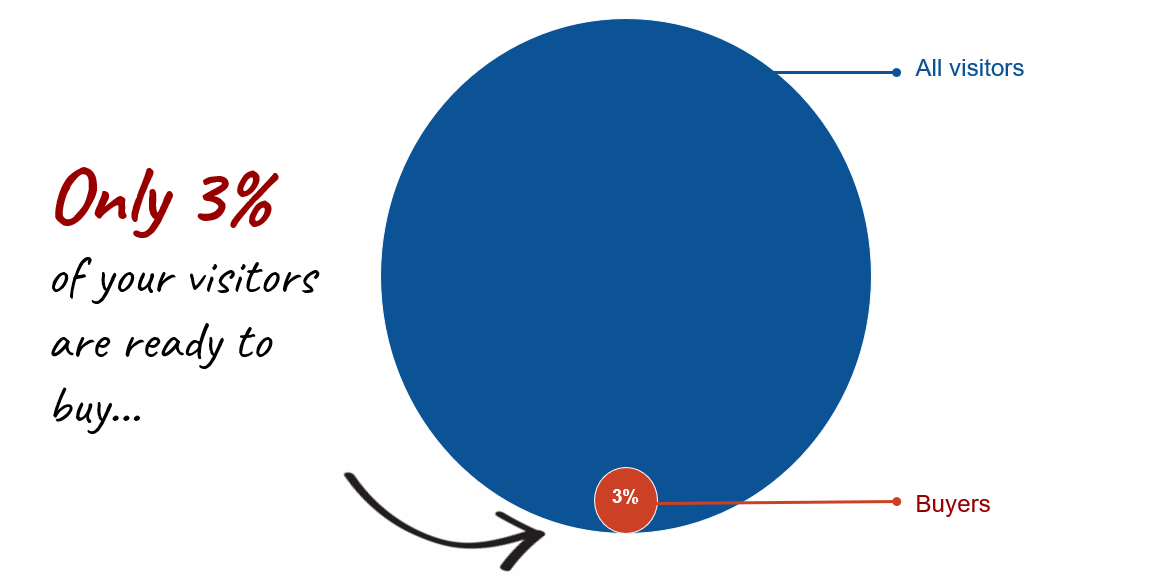
Think about when you first visit an online store.
How annoyed do you feel when you’re trying to look at a product, and a popup demanding you to “Buy Now!” interrupts your browsing? It’s a little pushy, right?
Targeting your messages based on customer awareness encourages the right person at the right stage of the game.
As noted in our example, a new customer who isn’t aware of your brand isn’t any more ready to buy—than you are when you click on a new webpage. This is just one of many situations.
These basic problems all relate because they fail to target prospects with marketing messages based on the customer awareness stage.
Whether your marketing messages neglect to help visitors identify their problems, or you’re not helping them find the right products—targeting your audience with the right messages and marketing strategies based on their stage is the key to selling more.
First, you’ll need to understand the stages of customer awareness to get potential customers to buy from you. After you understand them, what you need to do will be much more clear.
5 stages of customer awareness
Now we know that visitors in different stages of awareness need different messages and information at different times during their visit.
Let’s rewind. Circa 1966: then, advertising mogul Eugene Swartz successfully got into the psychology of buyer mentality with his “Customer Awareness Stages” marketing campaign strategy…
Since then, many marketers have followed suit but also optimized their marketing techniques to add a post-purchase stage.
The deep dive…
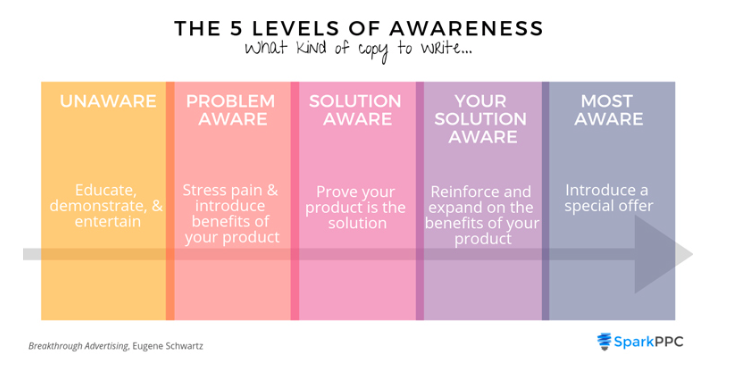
Source: SparkPPC
1. Problem-unaware stage
If your prospective customer is unaware that they have a problem or that you can solve their problem— they don’t know where to start.
They probably stumbled upon your site through a Facebook or Instagram ad. Guiding them and presenting clear info on identifying the problem and how to solve it will help convert these browsers into buyers.
The Flare bracelet is a brilliant example of this with their social media ads. The Flare team identifies and communicates a clear problem to their target audience while providing a solution.
Designed for women (or anyone) in potentially dangerous situations like dating or travel, their stylish bracelet sends a GPS location to family, calls 911 in case of an emergency, and directs incoming calls to the wearer’s phone with a click.
They are able to help keep more people safe—but first, they identified the problem, and then they provided a seamless transition to a discrete yet safe solution.
The best part? Their customers thank them for it.
2. Problem aware stage
In the problem-aware stage, the visitor knows that they have a problem or desire, but they either don’t know how to fix it or aren’t sure where to get their needs met.
Problem-aware visitors are pretty easy to spot using basic analytics. For example, these visitors typically find your site by searching for a specific answer, such as “How to be more productive while working from home.”
Alternatively, maybe they clicked through to your site, following an ad that targets a problem–like, “How to lose 10 pounds at home.” Once you know your visitor’s problem, you can solve it easily for them.
3. Solution aware stage
The solution-aware visitor knows there’s a solution, but they can’t decide which product is the best solution.
For example, they may want to get fit and already know that running, boxing, or cycling are all potential solutions, but they can’t decide whether or not to buy a treadmill or an indoor exercise bike.
How do you spot solution-aware visitors? These visitors often browse a specific product category (e.g. bikes), or land on your site from specific keywords like “best compact treadmill.”
4. Product aware stage
A product-aware visitor knows the solution to their problems and is aware of the best products for the job, but they can’t narrow down which product would be the best choice.
How can you tell if a visitor is in the product awareness stage?
They often search for product comparisons, or for a specific product on Google (like ‘The Good Dye Young hair dye’). Another tell is that they jump from similar product page to similar product page, based on “related-product recommendations.”
5. Most aware stage
In the most aware stage, the visitor has found the right product to solve their problem—they’re just waiting for a good offer to make the purchase.
How do you know if a visitor is at the most aware stage?
When they keep returning to the same product page, have an item in their cart, or land on your site from a product remarketing ad on their favorite social media site.
+1 Post-purchase stage
After your customers make their purchases, you need to think about how you can keep their attention and nurture your relationship with them to turn them into repeat customers.
You want them to keep coming back, because it costs you about 25 times less to keep a customer than it does to win a new one.
How to talk to each customer based on their stage of awareness
Now that you know the stages of awareness and how to spot which stage each visitor is at, you can start drawing up a marketing plan that gives each prospect what they need at the right time.
The only way to win and keep your customers while growing your profit margin is by showing relevant, targeted messages based on each customer’s stage of awareness.
This is not only powerful, your customers will also enjoy their sales journey and reward you with more purchases.
By doing this, you can provide real assistance for your visitors at the right time, by helping them to feel that you understand them.
This approach is called Customer Value Optimization (CVO).
If you want to learn more about CVO, you can read more about it in our guide.
How to match your marketing messages and strategies with the right stage of awareness
Now let’s see some actionable tips for each customer awareness stage.
1. Educating problem unaware visitors
At this stage, your aim should be to help your visitors gain awareness about a specific and relevant problem or a goal they could achieve.
For example, they may have a problem that they aren’t fully aware of yet—like they’re losing money with the wrong energy bill provider.
This stage is all about educating the visitor about a problem or desirable goal. Show them how they can solve the problem or reach the goal with the right solutions on your site. You also want to increase their desire for those specific solutions.
Providing educational content in exchange for an email address is a great way to nurture a prospect’s awareness of their problem on a deeper level:
2. Problem aware and the power of content
It’s important to make it as easy as possible for the problem-aware visitor to compare the available solutions—while promoting your own. This helps them with the problem of searching for the right solution.
A solution could be a specific product, a product category, or remarkably helpful content.
At this stage, content marketing (from an informative webinar to in-depth and value-rich blog posts) can help inform prospects about the best way to solve their problem. It will also build your authority as someone who can potentially solve their problems in the future.
Check out how promoting ebooks as list-building incentives provides an in-depth look at how your solutions can fix their current issues. Plus, building your list will help you keep subscribers informed about the different fixes that you offer.
Want to promote your solutions without coming across as extremely salesy?
You can recommend relevant products in blog articles:
3. Providing matching recommendations for solution-aware visitors
The solution-aware stage is all about your prospect’s pain or goal and how one of your products is the best solution.
These shoppers know which product category they need to shop in and how it would help solve their problems and get them closer to hitting their goal. They just don’t know which product is exactly right for them.
For example, they may know that they need a healthy snack bar, but they don’t know which one to go for.
Here’s how you can help:
- Show the most popular products of a category
- Recommend relevant products on the homepage for returning visitors:
- Create a quiz to help visitors find personalized solutions:
4. Build trust at the product awareness stage
At the product-aware stage, your potential customer knows exactly which product category may offer a solution to their problems and is comparing specific products.
For example, they’ve got 3 different tabs open for similar products from different stores (including yours), but they’re not sure if yours is the right item for them.
You need to build trust with your visitors by promoting testimonials and positive reviews (both of which act as strong social proof).
Help them by reducing their uncertainty with great customer support, and nudge them towards a purchase with personalized product recommendations.
Here are some specific examples of how you can help visitors at this stage:
Highlight customer reviews:
- Offer discounts in exchange for a newsletter subscription:
- Promote free shipping:
5. Most aware and the best offer
Most-aware prospects have the intent to buy—they’re just not entirely sold on buying right now.
Reduce the uncertainty around making a purchase and draw these prospects in with personalized offers or limited-time deals that are triggered when a visitor tries to ditch their cart.
Promote special offers upon exit intent:
You can also use coupon reminders to increase redemption:
Prevent cart abandonment by offering time-limited deals:
Remind returning visitors of previously-viewed products with a welcome message:
+1 Post-purchase: the new greatest thing since sliced bread
Ok, so you’ve converted your customer- it’s time to celebrate, right? But here’s your chance to turn your new engagement into a loyal fan.
Just after your customer makes a purchase is the best time to tap into their “buyer’s high” and nurture your relationship with personalized discounts and requests for feedback.
Here are some examples that inspire us—they might catch your customer’s eye too:
Awesome post-purchase discount in exchange for feedback:
- Promote new products when they return:
- Promote seasonal sales:
Convert more visitors with customer value optimization
Customer value optimization—when you deliver the right message, to the right person, at the right time—it can help you beat your low conversion rates.
From meaty blog posts (that help readers figure out their goals and pains) to post-purchase discount codes (that keep ‘em coming back)—your store visitors will get excited about buying from you and become genuine fans of your brand if you personalize your marketing messages.
Want to learn more about Customer Value Optimization? Check out our guide here.
FAQ
What are customer awareness stages?
Customer awareness refers to the various levels of awareness that potential customers have regarding a product or service. These stages typically include the unaware stage, problem-aware, solution-aware, and product-aware stage. Each stage represents a different level of understanding and engagement with the offering.
How can customer awareness stages help businesses understand their customers?
Understanding the stages of customer awareness allows you to tailor your marketing and sales strategies to meet the specific needs of customers at each stage. By identifying where customers fall in the awareness spectrum, you can create content that resonates with your target audience, leading to more effective communication and higher conversions.
What strategies can businesses use to leverage customer-awareness stages for conversion optimization?
You can employ several strategies to leverage customer-awareness stages for conversion optimization:
- Tailored messaging: Craft marketing materials and create content that speaks directly to the concerns and motivations of customers at each stage of awareness.
- Educational content: Provide informative, valuable content that addresses common questions and challenges faced by customers at different stages, helping to build trust and authority.
- Personalization: Use data and analytics to personalize the customer experience, delivering targeted recommendations and offers based on individual preferences and behaviors.
- Multi-channel approach: Reach customers through various channels and touchpoints, ensuring consistent messaging and engagement throughout the buying journey.
How long does it typically take for customers to progress through the awareness stages?
The timeline for customers to progress through the customer awareness stages can vary depending on various factors, including the complexity of the product or service, the customer’s level of engagement, and external influences such as market trends or competitor actions. Some customers may move through the stages relatively quickly, while others may take more time to research and evaluate their options before making a decision.
Wrapping up
Creating the perfect, individualized shopping experience through Customer Value Optimization is key to building a business with brand authority and loyalty to withstand the vastly changing ecommerce market.
But to monetize traffic, you don’t need to start from scratch. OptiMonk has a vast library of popup templates, so you can get back to doing what you love to do: helping your customers and watching your business grow.
Want to find out more about what OptiMonk can do for your business? Create a free account today.
Migration has never been easier
We made switching a no-brainer with our free, white-glove onboarding service so you can get started in the blink of an eye.
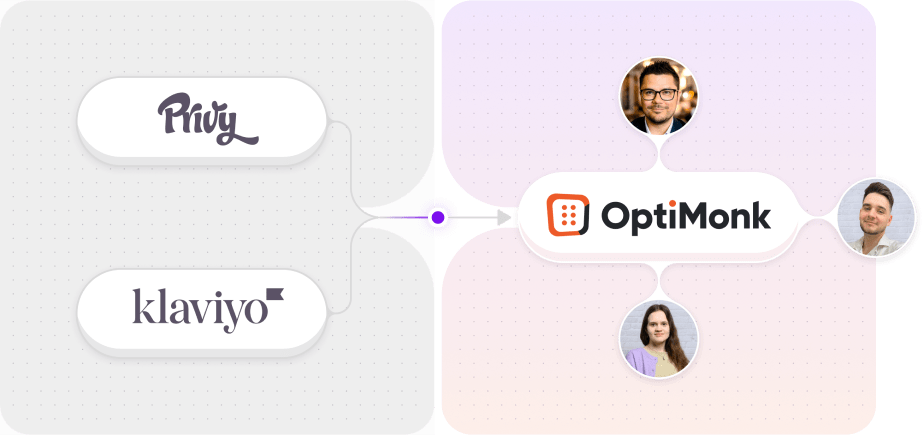
What should you do next?
Thanks for reading till the end. Here are 4 ways we can help you grow your business:
Boost conversions with proven use cases
Explore our Use Case Library, filled with actionable personalization examples and step-by-step guides to unlock your website's full potential. Check out Use Case Library
Create a free OptiMonk account
Create a free OptiMonk account and easily get started with popups and conversion rate optimization. Get OptiMonk free
Get advice from a CRO expert
Schedule a personalized discovery call with one of our experts to explore how OptiMonk can help you grow your business. Book a demo
Join our weekly newsletter
Real CRO insights & marketing tips. No fluff. Straight to your inbox. Subscribe now
Csaba Zajdo
- Posted in
- Conversion
Partner with us
- © OptiMonk. All rights reserved!
- Terms of Use
- Privacy Policy
- Cookie Policy
Product updates: January Release 2025
